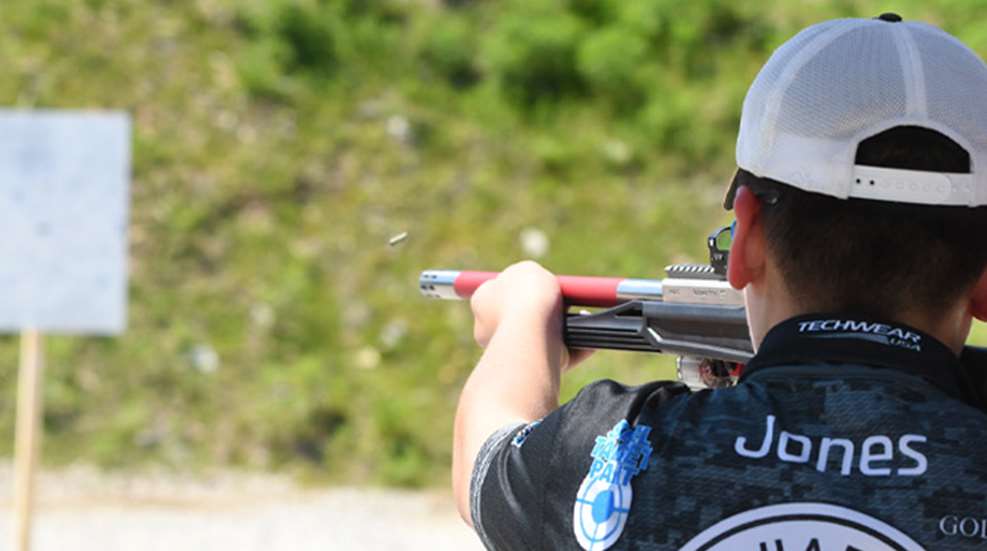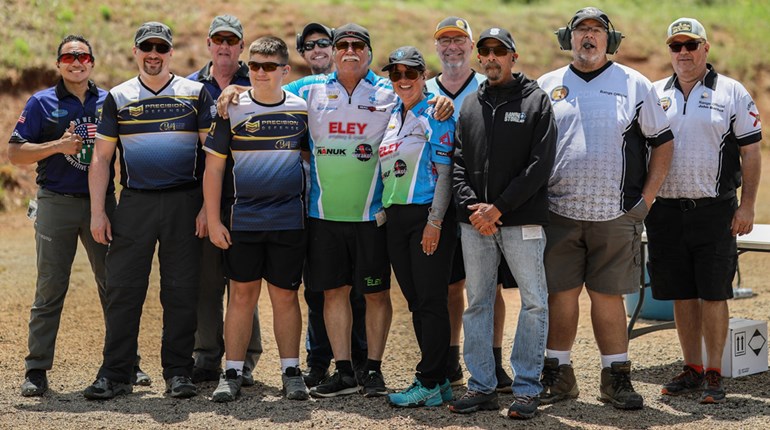
Some shooters are faster than they are accurate. For others like myself, the inverse is true. I’ve never had a problem shooting accurately, but always struggled to keep up with the pace of fire required by most practical shooting sports. If you find yourself in a similar situation, working on visual speed may help your performance.
Many people think that visual speed just means “seeing faster”—and that’s not entirely accurate. When I use the term “visual speed,” what I’m referring to is the speed at which you can acquire an acceptable sight picture for the size and distance of the intended target. Yes, “seeing fast” helps, but it goes beyond that. You have to train your brain to process visual (and tactile) information rapidly. If you can process the information, you can make micro-sized adjustments to be on target at speed. Visual speed is the key to any practical shooting sport success, but nowhere is visual speed more critical than in Steel Challenge. If (this is a big if) your shooting fundamentals are solid, then increasing your visual speed will be the lowest hanging fruit to improving your scores at matches.
You have to be completely honest with yourself.But how do you increase your visual speed? There are many possible ways, but I’ll illustrate the method that I used, which has been effective for me. At the beginning of the year, I acquired some new dry-fire target decals which simulate the target presentation of various Steel Challenge stages. Looking back on my performance from the previous season, I picked four of my worst performing stages on which to practice. Using my timer, I set par times at “GM” levels. At first, I was unable to complete the stages before hearing the “beep” of the timer, but over the course of several days, I saw improvement. What was critical during this period of trying to complete strings within the selected par times was strict adherence to the fundamentals of shooting—grip, sight alignment and trigger control. You have to be completely honest with yourself—something that can be particularly challenging for iron-sight shooters.
Slowly I began to be able to actually complete strings at or even before the timer beep, but I saw something else happening—I could very clearly see each and every time the dot of my red-dot optic was not on the target. I also began to see with clarity when I made an edge hit, or in what quadrant of a target I was lined up on when I pulled the trigger (what is commonly referred to as shot calling). This, even more than being able to complete strings within the requisite par time, was irrefutable evidence that my training methodology was having the desired effect. My visual speed was gradually improving. Prior to this training, it was no problem to physically move the gun between the various targets at or even faster than what was necessary to achieve the desired par times. But now I could draw my gun and achieve an undisturbed sight picture on each plate of each string—and I could clearly identify when I didn’t.
Live-Fire Validation
Remember when I warned against “cheating yourself” in dry fire? Well, the next step of the process should be to validate that what you’re doing in dry fire as being correct (or not) via live fire. You should have some standard drills that you perform in live fire which are timed. It would be great if I could simply practice the same Steel Challenge stages in live fire that I practice in dry fire. But my local club (like most others out there) doesn’t leave Steel Challenge stages up for the members to shoot, or even give general access to the targets to be able to set them up. That’s okay—if you’re truly increasing your visual speed, then you should be able to see that improvement on virtually any timed shooting drill. In my case, I like to shoot some different timed drills on a standard steel plate rack.
What I found when I began shooting my live-fire drills on a plate rack truly astonished me. At the end of the shooting season last year, I could repeatably shoot six steel plates in about 3.30 seconds with my Carry Optics pistol—not a blistering fast time, but it was repeatable. Once the weather got warm enough to get outside, I anxiously went to my club’s plate rack to see if I had improved thanks to my weeks of dry-fire training to increase my visual speed. I was consistently shooting six plates under three seconds—2.70 to about 2.85 seconds was what I was seeing.
I then shifted to Pistol Caliber Carbine (PCC) and saw similar improvements. Last year I had just started shooting a plate rack in less than two seconds. During this session, however, I was consistently shooting each and every string in less than two seconds—between 1.70 and 1.80 seconds every time. Once more, much like my experience in dry fire, I saw where I was aiming for every miss. “That one was high left,” or “That was just right of the plate.” This is the validation that I was looking for—that not only was my training plan to increase my visual speed sound—so were my shooting fundamentals in dry fire.
Shooting Rimfire Will Help
Here’s another tip for those who shoot centerfire that want to increase their visual speed—shoot rimfire. Again, using the Steel Challenge example, rimfire divisions have faster par times in each level of classification as compared to centerfire divisions. While shooting a rimfire pistol from low-ready may do little from a shooting fundamentals perspective to make you a better centerfire pistol shooter, the fact that you can shoot faster with a rimfire pistol will help you to learn to see and process information more quickly—which will help you in centerfire.
I just began shooting both Rimfire Rifle Optic and Rimfire Pistol Open last year in Steel Challenge. Besides being fun divisions in which to shoot, I’ve seen some real improvement in my centerfire counterparts as a result, particularly in PCC which is quite similar to Rimfire Rifle Open. Hopefully what you have learned here will help you too.
Article from the May/June 2020 issue of USPSA’s FrontSight magazine. Photo by John B. Holbrook, II.
See more: Review: CWA Custom 1911-22


































